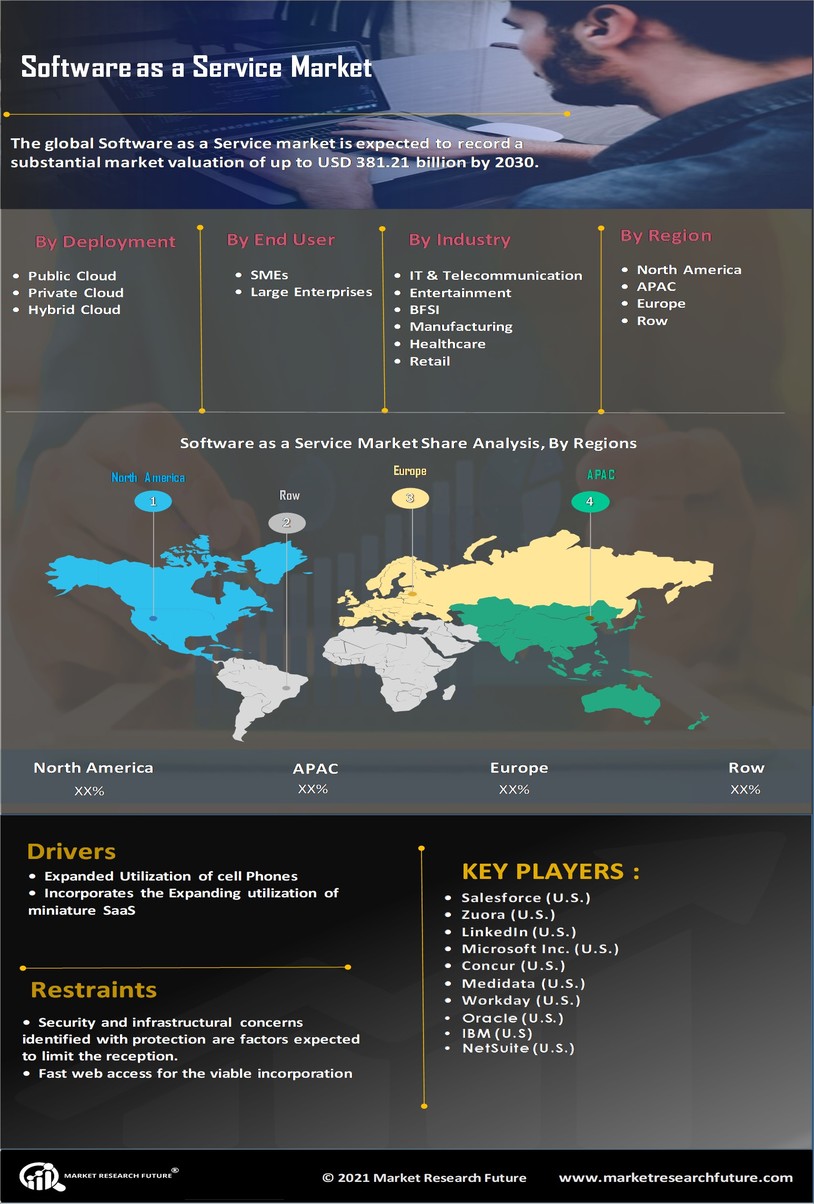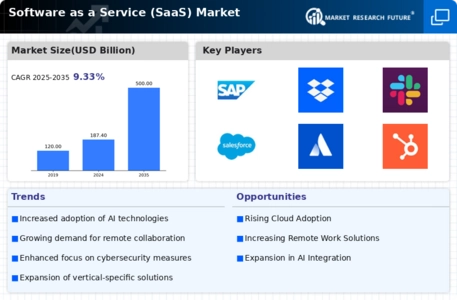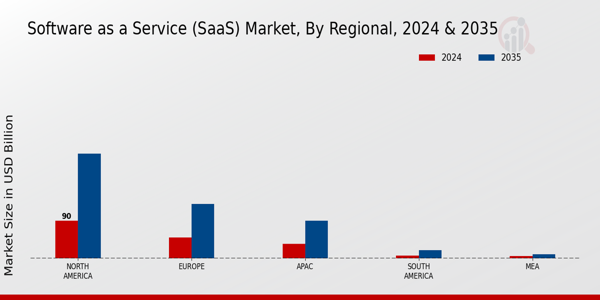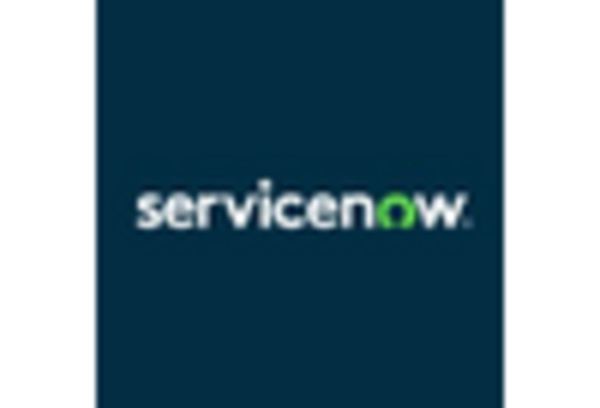Growing Emphasis on Customer Experience
The Software as a Service (SaaS) Market is increasingly influenced by a growing emphasis on customer experience. Companies are prioritizing customer satisfaction and engagement, leading to the development of SaaS solutions that enhance user interactions. Recent surveys indicate that organizations investing in customer experience initiatives are likely to see a 10-15% increase in revenue. This trend underscores the importance of SaaS platforms that offer personalized services, seamless interfaces, and responsive support. As businesses strive to differentiate themselves in competitive markets, the Software as a Service (SaaS) Market is expected to expand, driven by the demand for solutions that foster positive customer relationships.
Rising Demand for Remote Work Solutions
The Software as a Service (SaaS) Market experiences a notable surge in demand for remote work solutions. As organizations increasingly adopt flexible work arrangements, the need for cloud-based applications that facilitate collaboration and productivity becomes paramount. According to recent data, the remote work software segment is projected to grow at a compound annual growth rate of approximately 20% over the next five years. This trend indicates a shift in how businesses operate, with SaaS solutions providing essential tools for communication, project management, and file sharing. Consequently, the Software as a Service (SaaS) Market is likely to expand as companies seek to enhance their operational efficiency and employee engagement through innovative remote work technologies.
Increased Focus on Cybersecurity Measures
The Software as a Service (SaaS) Market is witnessing an increased focus on cybersecurity measures. As cyber threats become more sophisticated, organizations are prioritizing the security of their data and applications. This trend is reflected in the growing investment in cybersecurity solutions, with the market projected to exceed 300 billion dollars by 2024. Companies are seeking SaaS providers that offer robust security features, including encryption, multi-factor authentication, and compliance with industry regulations. This heightened awareness of cybersecurity risks is likely to drive the Software as a Service (SaaS) Market forward, as businesses look for reliable partners to safeguard their digital assets.
Cost Efficiency and Scalability of SaaS Solutions
Cost efficiency and scalability are pivotal drivers in the Software as a Service (SaaS) Market. Organizations are increasingly drawn to SaaS solutions due to their lower upfront costs and the ability to scale services according to business needs. This model allows companies to avoid significant capital expenditures associated with traditional software installations. Data indicates that businesses can save up to 30% on IT costs by adopting SaaS solutions. Furthermore, the flexibility to scale services up or down enables organizations to respond swiftly to market changes. Consequently, the Software as a Service (SaaS) Market is likely to witness sustained growth as more enterprises recognize the financial and operational advantages of this delivery model.
Integration of Advanced Analytics and Business Intelligence
The integration of advanced analytics and business intelligence tools within the Software as a Service (SaaS) Market is becoming increasingly prevalent. Organizations are recognizing the value of data-driven decision-making, leading to a growing demand for SaaS solutions that offer robust analytics capabilities. Recent statistics suggest that the business intelligence software market is expected to reach a valuation of over 30 billion dollars by 2026. This growth is indicative of a broader trend where companies leverage SaaS platforms to gain insights into customer behavior, operational efficiency, and market trends. As a result, the Software as a Service (SaaS) Market is poised for expansion, driven by the need for actionable intelligence and strategic planning.


















Leave a Comment